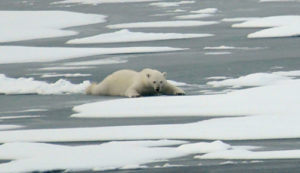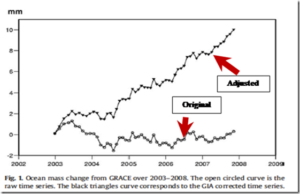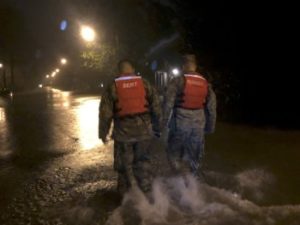by Polar Bear Science, September 27, 2018
We’ve hit the seasonal Arctic sea ice minimum for this year, called this morning by US NSIDC for 19th and 23rd of Septmeber: 4.59 mkm2, the same extent as 2008 and 2010. This is not a “ho-hum” year for polar bears: it means that since 2007, they have triumphed through 10 or 11 years1 with summer ice coverage below 5.0 mkm2 — levels that in 2007 were expected to cause catastrophic declines in numbers.

…
by The Energy Advocate, September 26, 2018
The French Government will drastically reduce the growth of its renewable spending in 2019, with the ecology ministry’s draft budget showing a 1.3% rise, which will effectively be flat after inflation.
Total spending on renewable projects will equate to €7.3 billion and will mostly go towards wind and solar schemes.
The move will force France to seek alternative forms of energy after last year France had to import UK coal power to fuel the country as temperatures plummeted in the winter months.
…
by Jim Steele, September 26, 2018 in WUWT
…
The suggested steady 3.3 mm/year rise since 1992 conflicted with CO2-driven model predictions of acceleration. So, based on the difficulties of calibrating altimetry with tide gauge data, various researchers claimed satellite drift and biases had over-estimated early estimates of sea level rise from 1994-2002. Various adjustments were then evoked, and varying rates of sea level rise published. New global sea level estimates rose at an accelerating rate from 1.8 in 1993 to 3.9 mm/yr today, others at 2.2 mm/yr in 1993 to 3.3 mm/yr in 2014, yet others found satellite adjustments lowered the average rate of sea level rise to 2.6 mm/yr over that same period. Elsewhere Harvard geophysicists were analyzing the effects of mass change on the earth’s rotation and wobble and were disturbed by the misfit between geophysical observations and sea level estimates. They argued that only if 20thcentury sea level rise was limited to 1.2 mm/yr could there be a good fit with geophysical expectations.

by David Middleton, September 26, 2018 in WUWT
Anthony recently posted an excellent Arctic sea ice analysis by Ron Clutz. In a similar vein, I decided to look at Arctic sea ice from a couple of other dis-alarming perspectives.
We keep hearing about the Arctic being ice-free anytime from next month up until a continuously rolling forward decade or so. One question that has to be answered is:
What does ice-free mean?
When does ice-free mean ice-free?
First, we need to clarify what exactly an “ice-free” Arctic summer is.
By “ice-free”, scientists usually mean a sea ice extent of less than one million square kilometres, rather than zero sea ice cover.
–Dr Alexandra Jahn, Assistant Professor in the Department of Atmospheric and Oceanic Sciences and Fellow at the Institute of Arctic and Alpine Research at the University of Colorado. Carbon Brief, August 25, 2016.
…
by H.S. Burnett, September 26, 2018 in ClimateChangeDispatch
…
Here are several facts that dispel these myths.
First, although the Atlantic hurricane season is not over yet, thus far, the number of hurricanes occurring this year is below average.
During a typical six-month Atlantic hurricane season, 12 named storms form, six become hurricanes, and three of those become major hurricanes – meaning Category 3 or higher.
This season, 10 named storms have formed in the Atlantic Basin, three of which became hurricanes.
Two other hurricanes briefly became minor storms off the west coast of Africa – and only Florence became a major hurricane.
Furthermore, only one has made landfall in the United States: Florence.
Before the above-average Atlantic hurricane season of 2017, the United States experienced the longest period in recorded history, nine years, without a major hurricane (Category 3 or higher) striking the country.
…

La géologie, une science plus que passionnante … et diverse



